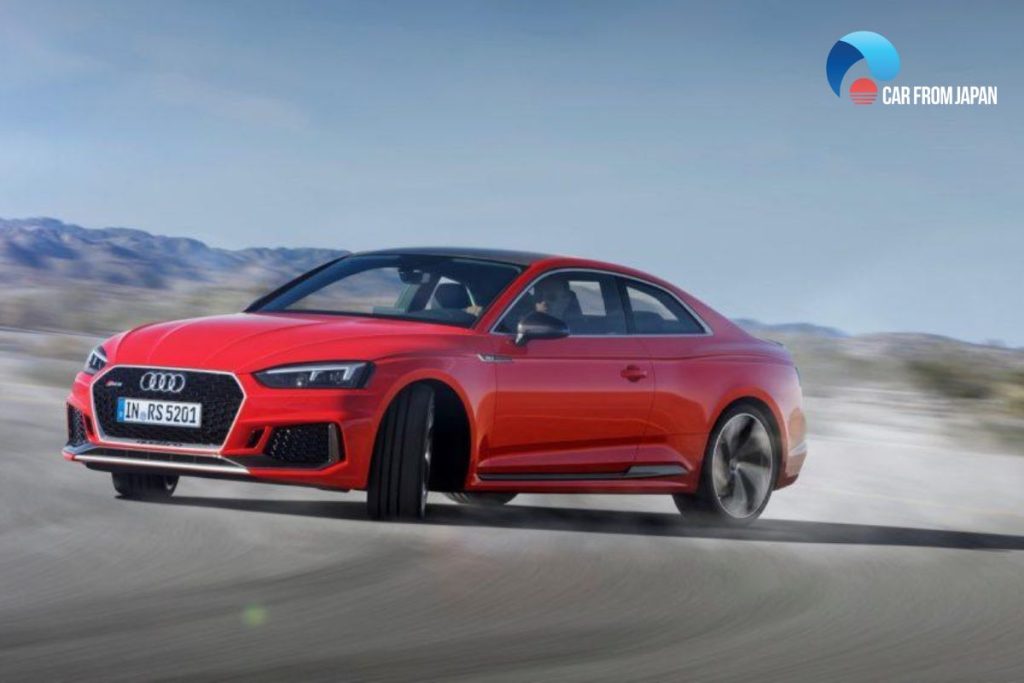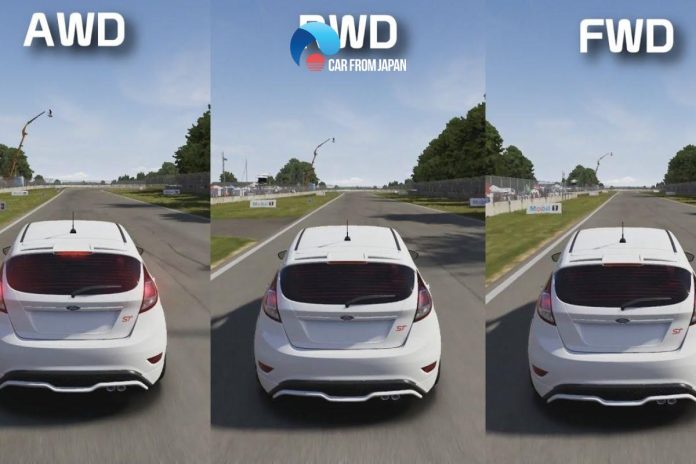Some car owners like the challenge of modifying their vehicles. The front-wheel driving controls the steering and pushes the weight to the back of the car on acceleration. Every high-power car manufacturer follows the rear-wheel drive setup.
You can convert front-engine cars into a mid-mounted engine for rear-wheel drive, which lends power to the back wheels.
However, many car owners are still not aware of the process involved in the FWD to RWD conversion.
Contents
- Overview Of FWD And RWD Systems
- What Is The FWD To RWD Conversion?
- FAQs on FWD to RWD Conversion
- Can I reuse the original FWD transmission in a RWD conversion?
- Why do some enthusiasts prefer converting FWD to RWD instead of buying a RWD car?
- Is it legal to convert a FWD car to RWD for street use?
- What cars are best suited for a FWD to RWD conversion?
- Are there any “bolt-on” kits for FWD to RWD conversions?
- What’s the average cost of a FWD to RWD conversion?
- Summary
Overview Of FWD And RWD Systems
Before finding detailed steps to convert FWD to RWD, we will take a brief look at these two drive systems.
Front-wheel drive (FWD)
FWD is a front-wheel drive system, meaning that the two front wheels will directly receive the “force” transmitted from the engine. The two front wheels will actively rotate and “pull” the two rear wheels to roll along.
Currently, most vehicles have the engine and transmission located in the front, so using the front-wheel drive is the simplest option.
One of the advantages of this system is that the power from the engine will be transmitted to the front wheel as quickly as possible, ensuring that not much energy is consumed during the transmission (due to the engine and drive system being placed close together).
However, the FWD system also has a disadvantage in that most of the weight of the front-wheel drive will be concentrated in the front end, resulting in poorer acceleration compared to other types of drive systems.
Rear-wheel drive (RWD)
A rear-wheel-drive (RWD) system works on the opposite principle, where the engine’s power is sent to the rear wheels, which “push” the car forward.
For typical front-engine RWD vehicles, the power from the engine will be transmitted to the drive shaft located on the rear axle via a crankshaft.
Thanks to the balanced weight distribution between the front and rear axles, RWD cars have a better grip on the road than the front wheels.
Acceleration capability is also better. It can be said that the rear-wheel drive system helps to overcome the disadvantages of front-wheel drive vehicles.
However, due to the need to go through the axles, RWD is sometimes a waste of power and transmission energy.
The longer path the power must travel through the driveshaft and other components means a small amount of energy is wasted in the process.
Watch the video from BodeVision to have a better understanding about Front Wheel Drive and Rear wheel drive!
What Is The FWD To RWD Conversion?
A rear-wheel drive conversion is not a new concept, as car drivers have been experimenting to achieve the cperfect RWD conversion for years.
A standard rear-wheel drive procedure includes cutting the car, designing a new chassis, and reassembling the entire thing with an engine, and a drive train.
Why Do It?
Performance
The core reason for this conversion is the pursuit of pure performance.
By shifting the drive wheels to the rear, the car’s handling is transformed. This re-engineering allows for a near-perfect 50/50 weight distribution, which stabilizes the chassis and maximizes grip.
It also eliminates the torque steer and understeer inherent in powerful FWD cars, giving the driver precise control and the ability to induce oversteer.
Making room for Serious Power
A FWD car’s transverse engine bay severely limits engine choices. The conversion to a longitudinal layout (RWD) opens up a new world of possibilities.
This is a way to fit a high-displacement or long inline-six engine into a compact car.
Uniqueness
A successfully executed FWD to RWD conversion creates a one-of-a-kind vehicle that carries a story of dedication.
A Test of Skill and Dedication
For ambitious builders, the project represents a test of welding, engineering, electrical, and problem-solving skills.
Far more than a simple bolt-on modification, this conversion is a full-scale re-imagination of a vehicle from the ground up.

The Core Transformation from FWD to RWD
Converting a FWD car to RWD is like experiencing an automotive rebirth. Here, you’re changing and forcing the car to become something it was never built to be.
Below is a basic breakdown of the core systems that are completely transformed within the process for your reference.
| System | Original FWD State | RWD Modification |
| Engine Orientation | Transverse: – Mounted sideways – Compact and efficient | Longitudinal: Rotated 90 degrees to sit front-to-back |
| Transmission | Transaxle: A single unit combining the transmission and differential | Separate gearbox: Mounted directly behind the engine |
| Power delivery | Half-shafts: Two short axles (CV axles) deliver power from the transaxle to the front wheels. | Driveshaft: A long, custom-made driveshaft – bridge the gap between the new transmission and the rear axle. |
| Rear axle | Dead axle: Hold the rear wheels on | Live axle: A powered rear end (with a differential) is installed. |
| Transmission tunnel | Almost flat floor: No central tunnel | A massive tunnel: – The floor pan is surgically cut open – A large, custom-fabricated steel tunnel is welded in |
| Firewall | Fit the side profile of a transverse engine. | Rebuilt: Cut / hammered / reshaped the firewall for the back of the engine and the transmission bellhousing. |
| Engine mounts | Two or three mounts | Custom: New mounting points welded to the chassis |
| Rear structure | – Light-duty mounting points – Hold a non-driven rear end. | Reinforcement: Strengthened car’s unibody with welded steel plates > Robust mounting points for the RWD subframe. > Handle the forces of putting power to the ground. |
| Front steering | Mounted high up, either on the firewall or front subframe. | Relocation: Remove and replace with a RWD-style rackNew mounting points and custom steering geometry. |
| Rear suspension | A simple system like a torsion beam or basic multi-link setup. | Transplant: – Unbolt and discard the rear suspension. – Replaced with the subframe and suspension assembly from the RWD donor car (e.g., a BMW E36, or Mazda Miata). |
Other Issues
After converting the most difficult parts of the engine and transmission, the other systems also need to be understood and paid attention to, because they have been transformed and redesigned to serve a new purpose.
If you have the opportunity, follow and observe the process with a professional mechanic and have them explain it to you in detail.
They are not basic and simple procedures, so we probably do not have enough knowledge and experience to guide you through a complete and reliable process on how to perform FWD to RWD conversion.
However, you can always learn and practice some basic operations to familiarize yourself with the machine and mechanical tasks, with tons of sources nowadays.
One of the first major hurdles is the fuel system, with the new rear differential and suspension assembly in place of the fuel tank.
Next, there is the new drivetrain with the custom exhaust routed to the transmission and rear subframe. Or the brake lines that need to be bent and soft braided hoses installed to keep everything safe and away from hot parts.
At the front of the car, you also need to pay attention to the radiator and the number of pipes that are misaligned due to the new engine orientation.
Finally, there is the complex wiring system of the “new” car. This system needs a connector to communicate with the new engine ECU. It is an installation step that requires lots of patience and electrical expertise.
Let’s hope that your project to convert FWD to RWD can continue steadily, overcoming these complicated wiring connections and problems above.
FAQs on FWD to RWD Conversion
Can I reuse the original FWD transmission in a RWD conversion?
Not typically. FWD transmissions are mounted transversely and do not support a driveshaft connection.
You’ll usually need to swap in a longitudinal RWD-compatible transmission.
Why do some enthusiasts prefer converting FWD to RWD instead of buying a RWD car?
Some do it for the challenge, to keep a sleeper build, or to repurpose a lightweight FWD platform they already own.
It’s more about custom performance or sentimental value than practicality.
Is it legal to convert a FWD car to RWD for street use?
Legality depends on your country or state. In many places, such modifications must pass inspection for safety, emissions, and registration compliance.
Some jurisdictions may require engineering certification.
What cars are best suited for a FWD to RWD conversion?
Older Hondas (like the Civic or Accord), compact Mazdas, or small coupes with ample engine bay room and aftermarket support tend to be common. But even then, it’s far from straightforward.
Are there any “bolt-on” kits for FWD to RWD conversions?
No true bolt-on kits exist due to the extensive chassis and drivetrain differences.
Some tuners offer partial kits or templates, but expect heavy customization regardless.
What’s the average cost of a FWD to RWD conversion?
Costs can range from $5,000 to over $20,000, depending on how much fabrication, parts sourcing, and custom tuning is needed.
Labor alone is a major factor if you’re not doing it yourself.
Summary
If you were looking to learn about doing FWD to RWD conversion, then we hope this guidelines will help you accomplish the mission without any hassle.
For more insightful Car maintenance tips, follow Car From Japan today!




how expensive do you think this is? and Is it worth it in you r opinion?
Depends on the type of car you have. If you’ve got a budget and lots of time, I’d say go for it, but in terms of expenses, you’re likely much better off to just buy an FR and save yourself the time and trouble…